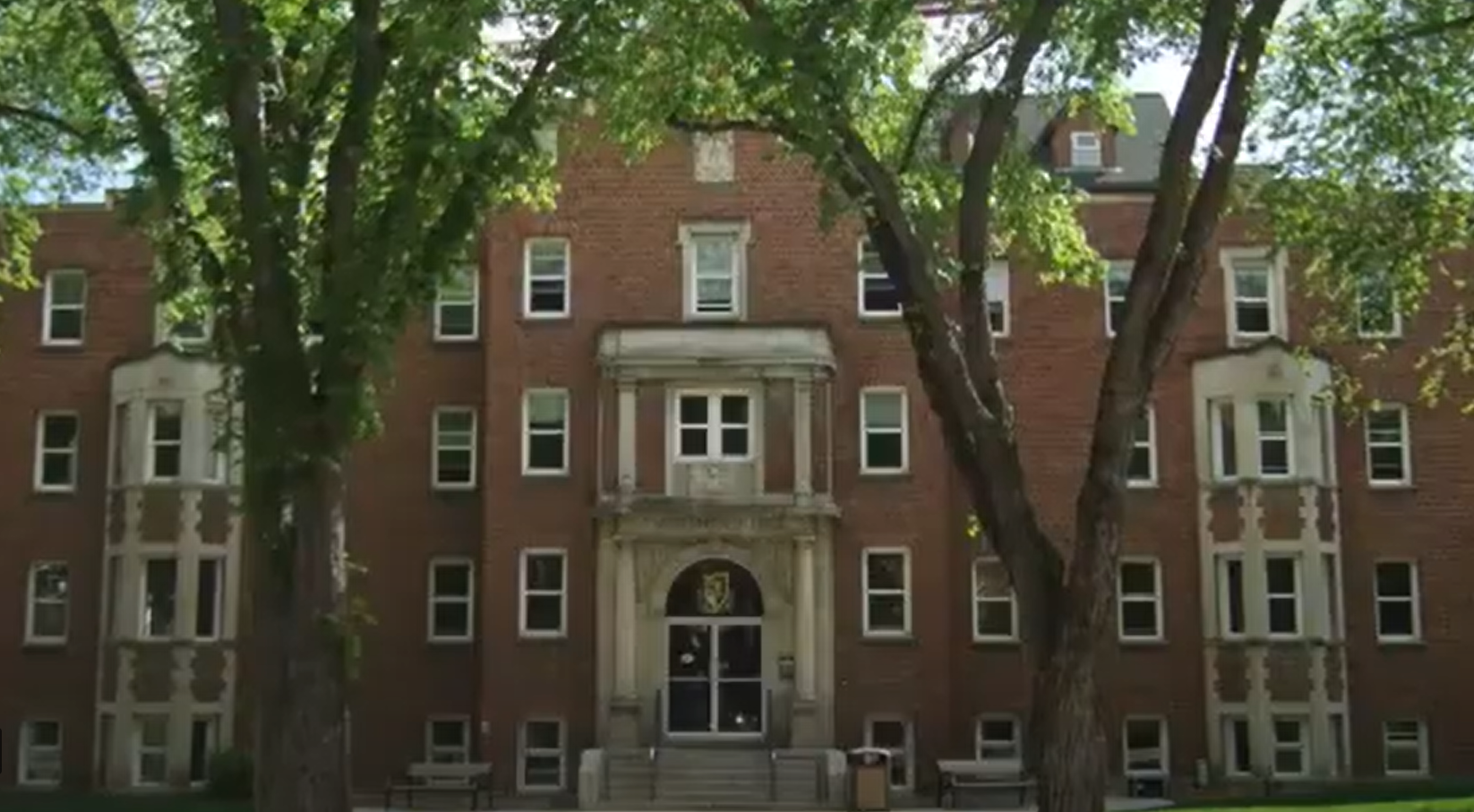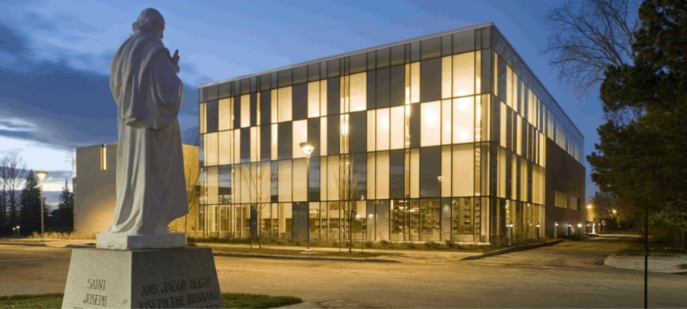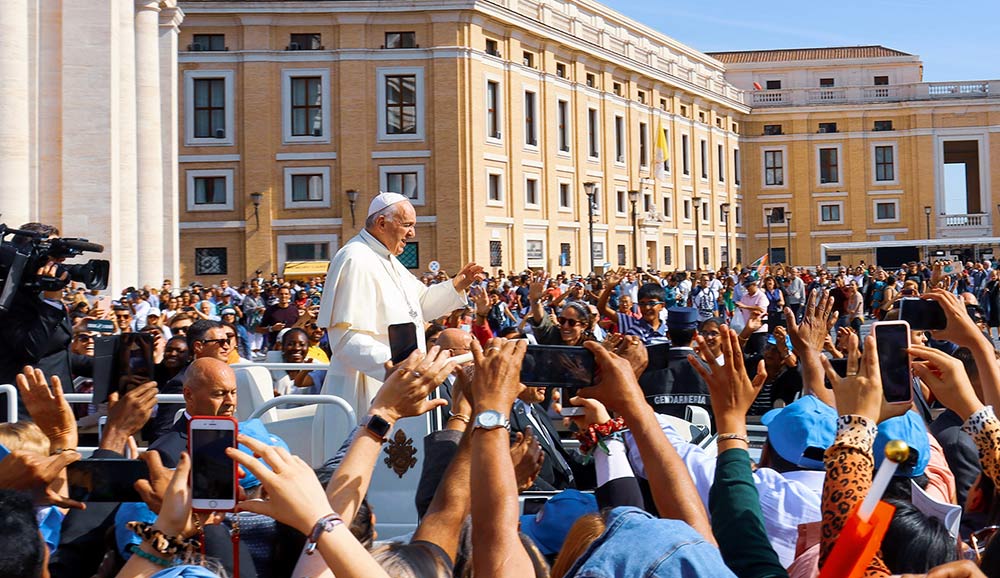- Details
- Written by John Wasch
- Category: Testimonial
548.
That’s a number that I keep on a post-it on my office wall. Why? It’s the number of service learning projects that the Catholic schools in our division completed last year.
Notwithstanding the dangers of vanity and pride, it’s a number that I’m happy to share when I speak about the blessings of Catholic schools. Students at all grade levels and in every location have the opportunity to identify areas of need, explore how they can make a difference, and then put their faith into action through service. In Calgary Catholic, we are blessed with a board of Catholic school Trustees that have expressed their commitment to providing service learning opportunities for all students as a priority item in our division’s three-year education plan. That expression provides staff with the direction that we need to prioritize such opportunities in our schools. 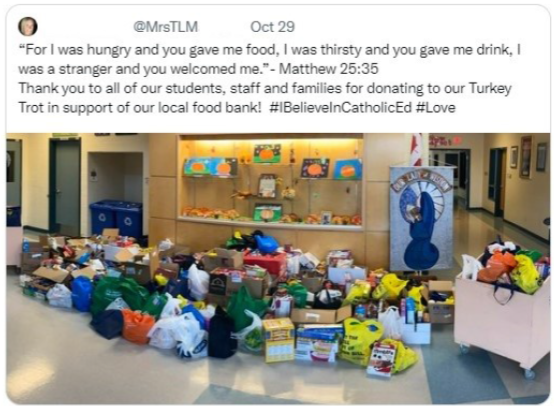
Engaging in service learning isn’t just about meeting an arbitrary goal for dollars raised, or cans of soup collected; it’s an opportunity to provide real-life experiences grounded in Catholic social teaching. It gives our students (and staff) opportunities to demonstrate respect for the inherent dignity and worth of human beings, a preferential option for the poor, and active community participation.
It looks a little different in each place. Sometimes, it’s the delivery of custom made Christmas cards to a community seniors’ residence. Other times, it’s a school-wide commitment to Chalice and the provision of funds to support communities in the developing world. Always, there is an emphasis on knowing and praying for those we serve.
When we reflect on the wide variety of projects taken on by our schools, it is easy to focus on the immediate impacts. More important, however, are the students’ opportunities for self-transformation. By engaging in service projects, students can develop a deeper sense of empathy and compassion – and can learn to see the world through the eyes of others. Service learning can also help students develop a sense of purpose and meaning in their lives, as they recognize the importance of using their talents and abilities to make a positive difference in the world.
When we guide our students in service-learning, we teach them to imitate Christ in habits of heart, mind and action. And, when we speak about the distinctiveness of Catholic education, our commitment to service is something that is core to our being as Catholics. This very Thursday at Mass, for example, we will hear the Gospel reading that perfectly embodies that:
So if I, your Lord and Teacher, have washed your feet, you also ought to wash one another’s feet. For I have set you an example, that you also should do as I have done to you. (John 13:14-15)
We should be excited to celebrate and share the Good News of how our students are being transformed and carrying out these acts of charity in our schools. This school year is rushing towards its conclusion – soon, our schools will be reporting back about the service projects they completed. One post-it note will come down and the next will go up…and I can’t wait!
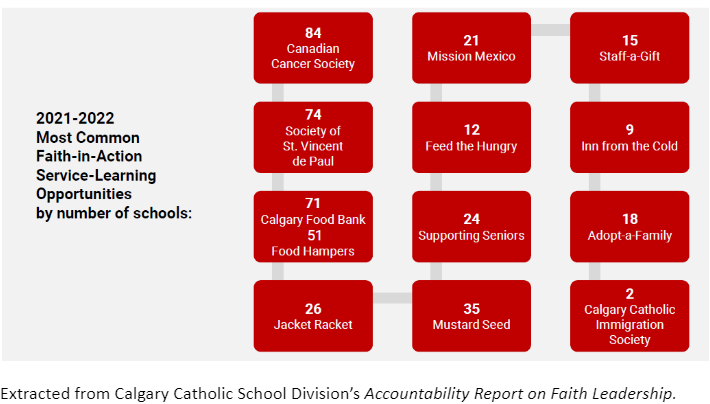
John Wasch currently serves as the Director of Catholicity for the Calgary Catholic School District. He has served as a teacher and administrator for 27 years in the field of publicly funded Catholic education.
- Details
- Written by Matthew Kostelecky
- Category: Testimonial
Colleges and Universities have a long and storied history in the Catholic domain. Indeed, it was within a particular Catholic context that ‘the University’ as such came into existence. The Church continually sees the need for and places value in these places of inquiry and learning, for who is Christ if not the teacher par excellence? There are three post-secondary Catholic institutions in Alberta: St. Joseph’s College (Edmonton), Newman Theological College (Edmonton), and St. Mary’s University (Calgary). These three institutions have similar missions, mandates, and are jointly a net benefit to the larger project of Catholic education in Alberta. Our contexts are markedly different, however.
As the Dean of St. Joseph’s, I’ll be presenting the unique context of St. Joe’s, as it is affectionately called. Sometimes St. Joe’s is called ‘the best kept secret at the UofA’. One of my jobs is to make it the worst kept secret.
Who We Are:
We teach and research in Catholic thought at the premier public research university in Alberta and one of the best universities in the country, consistently ranking in the top 125 universities world-wide. We allow for a space at the University of Alberta where questions of meaning, faith, and human thriving can be integrated and asked in a qualified academic framework, and this provides added value to UofA students, to the UofA at large, and to Catholic education in Alberta.
Some basic facts:
- St. Joe’s has 8 full-time tenure-track professors and 2 professors emeriti with PhDs from some of the best universities in the world (Toronto, Leuven, Cambridge, Alberta, Catholic University of America)
- We have a team of 20-25 talented, dedicated ‘sessional’ instructors, many of whom have terminal degrees in their field and extensive practical experience as educators or educational administrators.
- Our professors and instructors have cumulatively published over 20 books and 80 articles in the last 7 years, many in the most prestigious academic venues in their fields.
Teaching:
What really animates St. Joe’s Academics is teaching. We are passionate about teaching within our context, to Alberta’s and Canada’s future leaders, and all our classes are UofA Arts options.
We teach approximately 2000 students per year across +/- 70 courses and these cover the gamut of religious education, biblical studies, moral theology, history of Christianity, philosophy, science and religion and beyond. Our students regularly speak to the transformative impact of these courses on their personal, academic, and professional lives. St. Joe’s is a gem at the UofA and in Alberta – for there is nowhere else in Alberta that students at a public research university, who otherwise would not be educated by remarkable instructors in Catholic thought, take such courses.
Our Programs:
- Certificate in Catholic Education: This Certificate is a four-course sequence designed to introduce students to teaching in the Catholic primary and secondary system in Alberta. The Certificate ladders from general exposure to Catholic fundamentals (the first two courses treating, broadly, the Bible and fundamental catechetics) to pedagogical issues of how to teach within a Catholic district context. In sum, the Certificate provides a broad exposure to both fundamentals of Catholic doctrine and practical issues of how to teach in a Catholic context. We have signed MOUs with 11 of the 18 Catholic school districts in Alberta for the Certificate, which allows the Certificate to be considered a ‘hiring asset’ in our collaborating districts and helps connect potential teachers to recruiting districts.
- Minor in Christian Theology: In any given year, we have 30 to 40 minors in Christian Theology, which students choose to take as a supplement to their chosen course of studies at the UofA.
Campus Ministry, Chapel, and Residences:
St. Joe’s is a community with the larger UofA community, a place that many students call ‘home’ both literally and figuratively. We offer the only single-sex residences at the UofA, with spaces for 284 women in a newly built facility and 63 spaces for men in our historic building. These residences are a basic aspect of our community, as is our thriving campus ministry and chapel community. St. Joe’s offers daily mass and has 4 masses over the weekend, with 7pm Sunday mass catering in particular to St. Joe’s and UofA students.
Final Thoughts...
St. Joe’s is a remarkable place at the heart of a major research university, where Canada’s future leaders can be exposed to the richness of Catholic thought and spirituality as they embark on the next phase of their lives. It is a place that, together with St. Mary’s University and Newman Theological College, benefits Catholic education in Alberta and the Church in Alberta and beyond.
Dr. Matthew Kostelecky is the Vice-President (Academic) and Dean of St. Joseph's College at the University of Alberta. He holds a PhD in philosophy from the Katholieke Universiteit Leuven, specializing in the thought of St. Thomas Aquinas, as well as a BA in philosophy from the University of Dallas. Prior to joining St. Joseph's College in 2009, Dr. Kostelecky was an Assistant Professor at St. Francis Xavier University in Nova Scotia.
- Details
- Written by Beth Pecson
- Category: Testimonial
You have made us for yourself, O Lord, and our heart is restless until it rests in you. - St. Augustine
There are opportunities in a lifetime that humble us from thinking that we know many things to realizing that we do not know nearly enough. For me, the Master of Religious Education (MRE) Program at Newman Theological College was one of those rare gifts.
The MRE has not only become a game changer in my life; it has become a crucial road sign for my spiritual journey. In my studies, I was introduced to the writings of the Catholic apologists, the Church Fathers, the Popes, and leaders of the Christian faith. I was re-acquainted with the Catechism of the Catholic Church, the General Directory of Catechesis, and the Catholic Social Teachings. Most importantly, I was able to trace Salvation History throughout the Old and New Testaments, feeling more deeply God’s prodigal mercy and extravagant love for me. With the support of family, Edmonton Catholic Schools, the Newman Theological College’s teaching and support staff, and the accompaniment of my cohort, I renewed my commitment to Jesus as the center of all Scripture and the salvation of humankind.
The courses were designed to encourage not only private reflection and personal work, but also the gathering of information, the sifting through of resources and the collaborating with like-minded colleagues in and out of my school division. Being at the receiving end of instruction was a refreshing break from my regular duties.
What started out as an academic and professional challenge morphed into a layered gift that peeled off as each course was completed and still continues to surprise me today by its unfolding. Yet, the impact of the program did not end on its completion. With the understanding of the program’s content and the acquisition of the skills that it honed; I became more intentional about “faith seeking understanding.” I discerned writings more closely, questioned statements more deeply, tried to forgive more easily, aimed to serve more freely, and dedicated to living more in the moment.
That is not to say that finishing the program was easy. Over the course of four years, I had to rotate my dining chairs to prevent each one from getting a permanent dent from my nightly reading and writing to complete assignments. When I finished the program, I re-upholstered the full set! Lots of work, but every minute was worth the effort.
What I received from the MRE program I now consistently use in my roles as a Junior High Religion Teacher, School Chaplain, All-City JH Choir Director, and Parish Music Coordinator. It is a privilege and a blessing to be able to continue my faith journey and intersect it with my professional path so closely.
As we move forward into the future, I hope that many more educators will avail themselves of this wonderful opportunity and enter through the doors that will ultimately open to amazing possibilities.
Read more about Newman's Masters in Religious Education program here.
Beth Pecson is an accomplished choral director, music teacher, pianist and church musician working in Edmonton, Alberta.
For the past 30 years Beth has taught with Edmonton Catholic Schools as a music specialist and a Junior High Religion teacher. She was a recipient of the 2017 Excellence in Catholic Education Award given by the CCSSA (Council of Catholic School Superintendents of Alberta). She received her Master of Religious Education Degree (with Distinction) from Newman Theological College and was the recipient of the 2017 graduating class's Emmaus Award.
She has highlighted her students, from kindergarten to high school, at various division liturgical and fine arts celebrations and at local, provincial, and national music festivals.
Beth directs the Monsignor Fee Otterson Junior High School Choir and the ECSD (Edmonton Catholic School Division) All-City Junior High Choir.
She serves as the music ministry coordinator of Annunciation Catholic Church and lives in Edmonton with her husband and their four beautiful children.
- Details
- Written by Bonnie Annicchiarico
- Category: Testimonial
This past year I had the remarkable opportunity to be part of the Diocese of Calgary’s synodal leadership team. The task was enormous; the way forward was uncertain and the learning curve was straight up! Though this territory was uncharted for me, I was inspired immediately when I read the Vatican documents explaining the synodal process. The goals were aspirational and shared through the language of scripture and faith. I was moved. I was hooked! I remember thinking to myself (and saying to others), “How do these guys at the Vatican have the ability to really ‘get us’? To understand what we need and long for? How do they express it in words that clarify God’s love and the mission of the Church in such an effective way?’’


